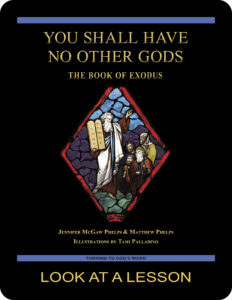covenant
 While we would expect to find themes of Eucharist or bread and wine central in the readings for the celebration of the Solemnity of the Most Holy Body and Blood of Christ, instead we see the Church focusing on the idea of covenant in all three readings.
While we would expect to find themes of Eucharist or bread and wine central in the readings for the celebration of the Solemnity of the Most Holy Body and Blood of Christ, instead we see the Church focusing on the idea of covenant in all three readings.
The Hebrew word for covenant, בְּרִית (berith), comes from uncertain origin. One prevalent theory is that it comes from the Hebrew verb meaning “to cut.” In the Old Testament, when a covenant was made, the two parties would cut an animal in half and pass between the pieces. Another theory is that the word comes from an Assyrian word meaning “to bind.” The covenant between God and Abraham in the book of Genesis 17:1–27 (NABRE) provides the Old Testament framework for the basic Judeo-Christian understanding that God and humanity have entered into a binding contract with one another.
What we know from context in the Old Testament is that this word frequently is used to describe an agreement between God and his people in which God commits himself to do certain things for his people if they will in turn follow certain rules. The New Testament διαθήκη (diatheke) literally means “something that is put or established between parties.” It can refer to a legal agreement or even a will, and it carries on the connotation of an agreement between God and humanity.
Why do you think the readings for the Solemnity of the Most Holy Body and Blood of Christ primarily are concerned with covenant? What was agreed upon between God and humanity that’s realized in the Eucharist? What part do we have to play?
you also may like our study of the book of Exodus
 You Shall Have No Other Gods: The Book of Exodus, a 28-lesson Catholic Bible study with an imprimatur, provides an in-depth look at how significant events in biblical history that occurred thousands of years ago to descendants of Jacob remain relevant and even critical for present-day Christians to understand. The deliverance of the Hebrews from slavery in Egypt and the giving of Ten Commandments are examined along with the development of Moses’ relationship to God. Click on the book’s cover to view a sample lesson.
You Shall Have No Other Gods: The Book of Exodus, a 28-lesson Catholic Bible study with an imprimatur, provides an in-depth look at how significant events in biblical history that occurred thousands of years ago to descendants of Jacob remain relevant and even critical for present-day Christians to understand. The deliverance of the Hebrews from slavery in Egypt and the giving of Ten Commandments are examined along with the development of Moses’ relationship to God. Click on the book’s cover to view a sample lesson.
 Click on the picture of the statue of Moses with horns (above) to learn more about Lost in Translation. A new entry is archived each Monday. Contact us to receive Lost in Translation by email every week. You may use any of the contact links on our website to ask Matthew a question.
Click on the picture of the statue of Moses with horns (above) to learn more about Lost in Translation. A new entry is archived each Monday. Contact us to receive Lost in Translation by email every week. You may use any of the contact links on our website to ask Matthew a question.
